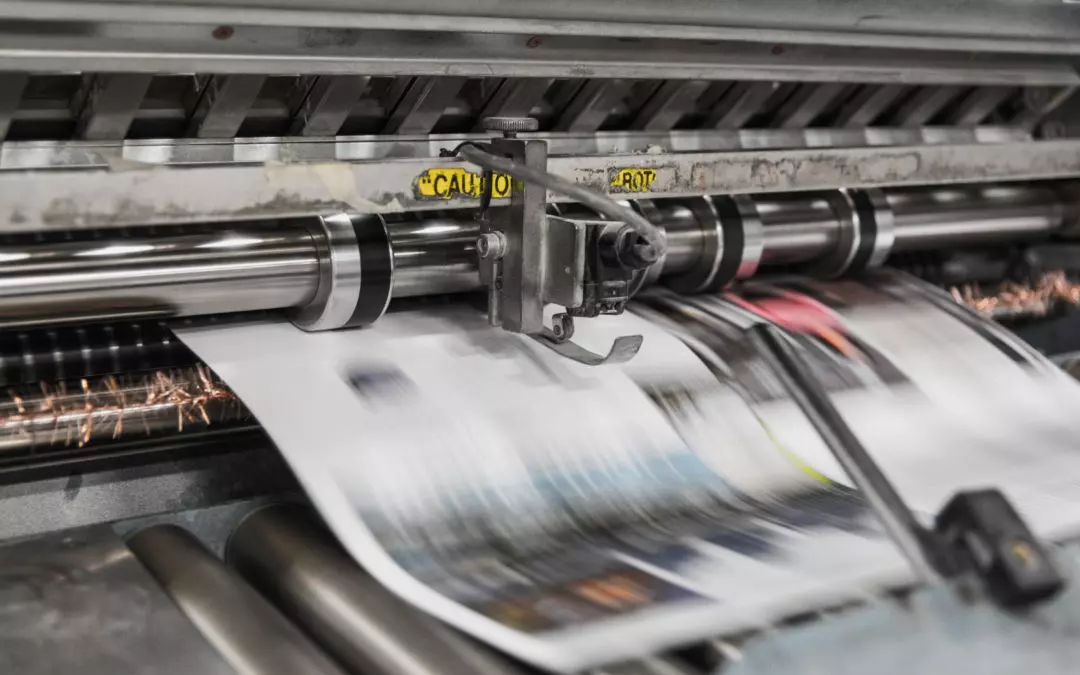


If you’re in the printing industry, you know how much your business relies on quality results, and you know how much goes into achieving them. From large signage to detailed photos, every aspect of your work needs to be pixel perfect — and a controlled environment is critical in helping you get there. A controlled environment or environmental room is essential for quality printing because it helps to maintain consistent levels of humidity and temperature. Without one, paper will absorb or dissipate moisture, leading to improper toner adherence, frequent paper jams, and unstable fuser roller temperatures. But what does that controlled environment look like? Let’s explore what that ideal operating environment is for a digital printing press, and how you can ensure yours is set up properly.
Paper is hygroscopic, which means it picks up and releases moisture from its surrounding environment to reach equilibrium with the area. The amount of moisture that paper holds affects its ability to result in quality prints. That said, the ideal operating environment for a digital printer features a stable level of both humidity and temperature. Let’s take a look at each of those factors individually.
The ideal operating environment for a digital printer will put paper around 50-55% relative humidity (RH). RH is a measure of how much water vapor is in a water-air mixture, in comparison to the maximum amount possible. With an RH of anything 40% or below, your paper can start to change shape and cause electrostatic charges between other paper — eventually leading it to stick and attract dust particles. With an RH too far above 60%, your prints can experience longer drying times, poor ink adhesion, and more dot gains and image bleeding.
As for temperature, an ideal operating environment for a digital printer would be around 68°F. Any lower and your ink will become more viscous, potentially forming sediment that could clog your printhead’s nozzles. Any higher and your ink will become less viscous, which can cause leaking from your printhead’s nozzles.
It’s easy to know the requirements for an ideal printing environment. It’s more difficult to actually achieve and maintain them. Here are three tips to ensure you’re designing the ideal operating environment for your digital printing press.
In order to know if you’re consistently maintaining the ideal temperature and humidity in your printing environment, you need a way of monitoring it. For temperature, this is as easy as installing a reliable thermometer in your space. For humidity, you’ll want to use a hygrometer, which may be an instrument you haven’t used before, but is important for measuring water vapor levels in your environment. Starrco’s dealer network can help you achieve both.
If you’re finding it difficult to keep your entire production area controlled, you may want to install a machine enclosure. This enclosure can help minimize the space you’re controlling, making it easier to maintain stable temperatures and humidity levels.
Have a large printing press operation? You may want to consider installing a large-scale controlled environment, or even a cleanroom. These spaces are specifically designed to regulate internal climates and can be built large enough to fit various machines, equipment, and personnel — all depending on your application’s specific needs. Looking for a controlled environment or cleanroom to house your digital printing presses? Starrco can help! Our team of experts can develop a solution that suits whatever specifications you have for your application. Give us a call or contact us online to learn more today.